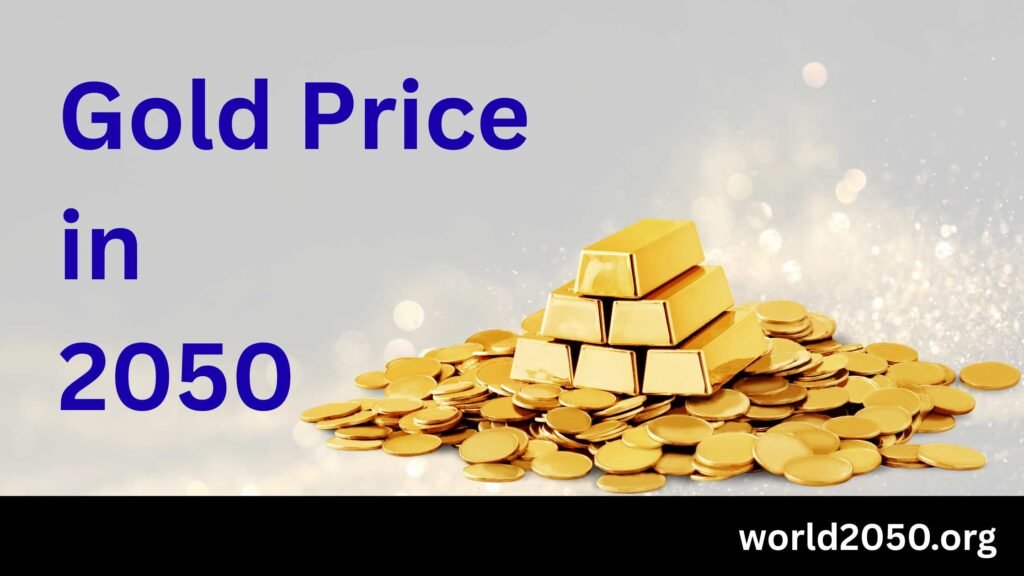Gold is expected to surge further in price to a maximum of $772 per gram by 2050 because of its ever-growing demand, geopolitical uncertainty, economic value, and universal acceptance. However, the sharp rise that we saw in the price of Gold in the last couple of decades will slow down due to the rise of Gold alternatives like Digital Gold, Gold-equivalent assets (ETFs), and cryptocurrencies.
Table of Contents
Projecting Gold Price for 2050
We have used past data to project a baseline price, a moderate price and a maximum expected price for 1 gram of Gold in 2050.
From $9 per gram in 2000 to $106 per gram in 2025:
$9 to $97.8, i.e., a CAGR ≈ 9.8%
Projecting for another 25 years:
- Base CAGR of 5%: $262 per gram
- Moderate CAGR of 7%: $418 per gram
- Aggressive CAGR of 9.8%: $772 per gram or $7800 (approx) for 10 grams.
Why Gold Matters?
Gold has been a safe investment since the beginning of humanity due to its rarity and universal acceptance. No other metal has reached the same status as Gold, except silver to a certain extent.
This is why we see Gold being used not only by individuals to secure their wealth but also by central banks to maintain their currency standard.
Gold Alternatives
Gold has always existed in a limited amount, which prompted the usage of alternate metals and precious stones as substitutes. In the modern era, precious stones have somewhat lost their appeal due to wide availability and industrial methods of manufacturing (diamonds, rubies).
However, there are several Gold alternatives that can act as safe investments, and some of them are equivalent to Gold.
Silver
Silver has been acting as Gold’s substitute since the dawn of humanity. The value of Silver, too, rises in sync with gold, except for the last century.
Historically, Silver has performed the same role in the economy, whether as jewelry or for investment. The industrial demand for Silver remains higher than Gold because of widespread usage in electronics, which then increases the likelihood of a sharper price rise.
Digital Gold
Digital Gold is a type of investment scheme where a financial services provider or a gold retailer will allow you to buy a certain amount of physical gold (often small), and you can redeem the Gold anytime by paying a small minting or making fee. For the entire period of investment, the seller holds the custody of the physical gold and is legally liable to pay you the amount of gold in your account.
Gold ETF
Gold ETFs are exchange-traded funds that you own and have the same growth rate as Gold. Many Gold ETFs are required to keep an 1:1 ratio of physical gold to honour their obligations.
The benefit of buying ETFs over physical gold is that it remains safe in dematerialized form, and allow you to buy in varied quantities due to a very low unit price.
Gold Bonds
Gold Bonds are getting popular because of the sovereign backing by Central Banks and other government institutions like the Reserve Bank of India. These bonds are denominated in grams of Gold and the issuers promise to honour you with the same amount of Gold (or cash equivalent) at the time of redemption. These bonds are also trade-able in the market, making them equivalent to Gold in many cases.
Bitcoin
The price of Bitcoin is expected to rise to a range of $3 million to $644 million by 2050. Bitcoin has replaced Gold as a preferred investment in certain areas because of its portability, universal acceptance, and limited quantity just like Gold.
Suggested Reading: Top Career Options in 2050

